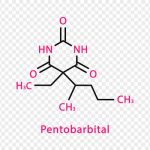1. Understanding Non-Invasive Fat Reduction
When it comes to body contouring, non-invasive fat reduction has become a popular alternative to traditional liposuction. These treatments use advanced technology to target and eliminate fat cells without the need for surgery, offering a less painful and more convenient option for those looking to slim down stubborn areas.
How Does Non-Invasive Fat Reduction Work?
Non-invasive fat reduction techniques work by disrupting fat cells through various methods such as controlled cooling, ultrasound waves, or laser energy. Once the fat cells are damaged, the body naturally processes and eliminates them over time. Unlike surgical procedures, these treatments do not require incisions or anesthesia.
Popular Non-Invasive Fat Reduction Methods
Several technologies are used in non-invasive fat reduction, each with its own approach to eliminating fat:
| Method | Technology Used | How It Works |
|---|---|---|
| Cryolipolysis (CoolSculpting) | Controlled Cooling | Freezes fat cells, causing them to break down and be eliminated naturally. |
| Liposonic Therapy (Ultrasound Fat Reduction) | Ultrasound Waves | Uses sound waves to break apart fat cells, which are then processed by the body. |
| Laser Lipolysis (SculpSure) | Laser Energy | Heats fat cells using laser technology, leading to their gradual breakdown. |
The Benefits of Non-Invasive Fat Reduction
This type of treatment offers several advantages over surgical options:
- No Surgery Required: No incisions, stitches, or anesthesia.
- Minimal Downtime: Most patients can resume normal activities immediately.
- Naturally Processed Fat Elimination: The body gradually removes damaged fat cells over weeks or months.
- No Risk of Surgical Complications: Avoids risks such as infection or scarring.
Who Is a Good Candidate?
The ideal candidates for non-invasive fat reduction are individuals who are close to their target weight but struggle with localized pockets of fat that don’t respond to diet and exercise. These treatments are not designed for significant weight loss but rather for refining body contours.
2. Popular Non-Invasive Fat Reduction Treatments
Non-invasive fat reduction treatments have gained popularity as effective alternatives to traditional liposuction. These treatments use advanced technology to target and eliminate fat cells without the need for surgery, anesthesia, or downtime. Below is an overview of the most common non-invasive fat reduction methods.
Cryolipolysis (CoolSculpting)
CoolSculpting is one of the most well-known non-invasive fat reduction treatments. This method uses controlled cooling to freeze and destroy fat cells in targeted areas. Over time, the body naturally eliminates these dead cells, resulting in a slimmer appearance. CoolSculpting is FDA-approved and is commonly used for areas like the abdomen, thighs, flanks, and under the chin.
Laser-Based Fat Reduction
Laser-based treatments use heat energy to break down fat cells. One popular example is SculpSure, which utilizes laser technology to heat fat cells until they are damaged and gradually removed by the bodys lymphatic system. This procedure typically requires multiple sessions and is ideal for smaller areas of stubborn fat.
Radiofrequency (RF) Therapy
Radiofrequency therapy works by delivering heat deep into the skin to target and destroy fat cells while also tightening the skin. Treatments such as Vanquish use RF energy to reduce fat in larger areas without direct contact with the skin. This method is beneficial for individuals looking for both fat reduction and mild skin tightening effects.
Comparison of Non-Invasive Fat Reduction Methods
| Treatment | Technology Used | Common Treatment Areas | Average Sessions Needed | Main Benefit |
|---|---|---|---|---|
| CoolSculpting (Cryolipolysis) | Freezing (Cryotherapy) | Abdomen, thighs, flanks, chin | 1-3 sessions | Permanently eliminates fat cells |
| SculpSure (Laser-Based) | Laser Heat Technology | Larger body areas with stubborn fat | Around 2 sessions | Quick treatment time (about 25 minutes) |
| Vanquish (Radiofrequency) | RF Energy Heat | Belly, thighs, love handles | Around 4 sessions | No direct skin contact required |
The choice of treatment depends on individual goals, body type, and desired results. While all these methods are effective at reducing stubborn fat deposits, they work differently and may require varying levels of commitment in terms of sessions and recovery time.
![]()
3. How Liposuction Works: A Surgical Alternative
Liposuction is a well-established surgical procedure designed to remove stubborn fat deposits from various areas of the body. Unlike non-invasive fat reduction methods, which use external devices to break down fat cells over time, liposuction physically removes fat through suction. This makes it an effective option for those looking for more immediate and dramatic results.
The Liposuction Procedure: Step-by-Step
The process of liposuction involves several key steps that help reshape and contour the body. Here’s what patients can expect:
| Step | Description |
|---|---|
| Anesthesia | The procedure begins with the administration of anesthesia, which can be local, sedation, or general anesthesia depending on the area being treated and the patient’s preference. |
| Small Incisions | Tiny incisions are made in the targeted areas to allow for the insertion of a thin tube called a cannula. |
| Fat Removal via Suction | The surgeon moves the cannula back and forth to break up fat deposits, which are then suctioned out using a vacuum-like device. |
| Sculpting & Contouring | The surgeon carefully shapes the treated area to ensure smooth and natural-looking results. |
| Closing Incisions | The small incisions are either left open to drain excess fluids or stitched closed, depending on the technique used. |
Liposuction Recovery: What to Expect
The recovery process varies depending on the extent of the procedure and individual healing rates. Here’s a general timeline of what patients can anticipate:
- First Few Days: Swelling, bruising, and discomfort are common. Compression garments are worn to help reduce swelling and support healing.
- First Two Weeks: Most patients can return to light activities within a few days but should avoid strenuous exercise.
- A Month Post-Op: Swelling begins to subside, revealing more defined results. Patients can typically resume normal physical activities.
- A Few Months Later: Final results become more visible as residual swelling continues to diminish.
Liposuction vs. Non-Invasive Fat Reduction: Key Differences
Liposuction provides faster, more dramatic results compared to non-invasive treatments like CoolSculpting or laser-based procedures. However, it also comes with longer downtime and potential surgical risks. Heres a quick comparison:
| Liposuction (Surgical) | Non-Invasive Fat Reduction | |
|---|---|---|
| Treatment Method | Surgical removal of fat through suction | No surgery; uses cooling, ultrasound, or laser energy to break down fat cells naturally |
| Anesthesia Required? | Yes (local or general anesthesia) | No anesthesia required |
| Treatment Time | A few hours in one session | Takes multiple sessions over weeks or months |
| Pain & Discomfort | Mild to moderate pain post-surgery; requires pain management during recovery | Mild discomfort during treatment; no significant downtime required |
| Dramatic Results? | Yes; noticeable reduction in fat immediately after swelling subsides | Milder results that develop gradually over time |
| Downtime & Recovery | A few days to weeks of recovery time needed | No downtime; patients can return to daily activities immediately after treatment |
| Permanency of Results | Permanent if weight is maintained | Permanent if weight is maintained |
Is Liposuction Right for You?
Liposuction is ideal for individuals who want significant fat removal and are comfortable with undergoing surgery. However, its not a weight-loss solution—it works best for those who are already at a stable weight but struggle with localized fat deposits that don’t respond to diet and exercise.
If you prefer a less invasive approach with minimal downtime, non-surgical fat reduction may be a better fit. The choice ultimately depends on your personal goals, lifestyle, and tolerance for recovery time.
4. Comparing Results: Non-Invasive vs. Liposuction
When considering fat reduction, it’s essential to compare the effectiveness, longevity of results, and the areas of the body best suited for each method. Both non-invasive treatments and liposuction have their strengths, but the right choice depends on your goals and lifestyle.
Effectiveness of Fat Reduction
Non-invasive fat reduction methods, such as CoolSculpting or laser-based treatments, gradually reduce fat over several weeks by targeting fat cells and allowing the body to eliminate them naturally. These treatments typically result in a 20-25% fat reduction in treated areas.
Liposuction, on the other hand, is a surgical procedure that immediately removes fat deposits through suction. It can remove larger volumes of fat in a single session, making it more effective for those looking for dramatic body contouring.
Longevity of Results
Both non-invasive treatments and liposuction offer long-lasting results as long as a healthy lifestyle is maintained. Since fat cells are permanently removed in both cases, weight gain after treatment will occur in untreated areas or remaining fat cells.
However, because non-invasive procedures rely on the bodys natural processes, multiple sessions may be needed for optimal results, whereas liposuction provides immediate changes with a single procedure.
Best Areas for Treatment
Certain areas of the body respond better to each method. Below is a comparison of which treatment is best suited for specific body areas:
| Body Area | Best for Non-Invasive Treatment | Best for Liposuction |
|---|---|---|
| Abdomen | Yes (for mild to moderate fat) | Yes (for significant fat removal) |
| Thighs | Yes (outer and inner thighs) | Yes (for larger fat deposits) |
| Arms | Yes (small pockets of fat) | Yes (for extensive sculpting) |
| Chin/Neck | Yes (precise contouring) | Yes (faster removal of excess fat) |
| Flanks/Love Handles | Yes (gradual slimming effect) | Yes (for more dramatic shaping) |
Which Option Is Right for You?
If you prefer a gradual, non-surgical approach with little to no downtime, non-invasive treatments may be ideal. However, if you want immediate and more dramatic results with one procedure, liposuction may be the better option. Consulting with a qualified provider can help determine which method aligns best with your needs and expectations.
5. Factors to Consider When Choosing the Right Treatment
When deciding between non-invasive fat reduction and liposuction, several factors come into play. Your choice should be based on your goals, body type, lifestyle, and tolerance for downtime and risks. Below, we break down key considerations to help you make an informed decision.
Downtime and Recovery
One of the biggest differences between these treatments is the recovery time. Non-invasive procedures typically have little to no downtime, allowing you to resume daily activities almost immediately. Liposuction, on the other hand, is a surgical procedure that requires anesthesia and comes with a recovery period that can last from a few days to several weeks.
| Treatment | Downtime | Pain Level |
|---|---|---|
| Non-Invasive Fat Reduction | No downtime; resume normal activities immediately | Mild discomfort during treatment |
| Liposuction | A few days to weeks of recovery time | Pain and swelling post-surgery |
Cost Comparison
The cost of these treatments can vary widely. Generally, non-invasive fat reduction is more affordable per session but may require multiple sessions to achieve desired results. Liposuction has a higher upfront cost but usually provides more dramatic results in a single procedure.
| Treatment | Average Cost (per session) | Total Cost Estimate |
|---|---|---|
| Non-Invasive Fat Reduction | $1,500 – $3,000 | $3,000 – $6,000 (multiple sessions may be needed) |
| Liposuction | $3,500 – $7,500 (one-time procedure) | $3,500 – $10,000 (depending on treated areas) |
Surgical Risks vs. Side Effects
Liposuction involves surgery, which means it carries risks such as infection, anesthesia complications, and prolonged swelling. Non-invasive treatments are generally safer but may cause temporary redness, bruising, or numbness in the treated area.
Surgical Risks of Liposuction:
- Anesthesia-related complications
- Pain and prolonged swelling
- Poor skin elasticity leading to uneven results
- Potential for infection or scarring
Side Effects of Non-Invasive Treatments:
- Mild redness or bruising in the treated area
- Numbness or tingling sensations temporarily
- No risk of infection since there are no incisions involved
- Might require multiple treatments for optimal results
Suitability Based on Individual Goals & Body Type
Your body type and aesthetic goals play a significant role in determining which option is best for you.
- If you want subtle fat reduction with minimal disruption: Non-invasive treatments may be ideal.
- If youre looking for more dramatic reshaping: Liposuction might be the better choice.
- If you have good skin elasticity: Liposuction can provide smoother results.
- If you prefer gradual changes over time: Non-invasive treatments allow for progressive fat loss.
- If you have stubborn fat that doesn’t respond to diet/exercise: Both options can help address these areas.
The right choice depends on your personal preferences, budget, tolerance for downtime, and how quickly you want to see results. Consulting with a qualified medical professional will help determine which approach aligns best with your needs.


